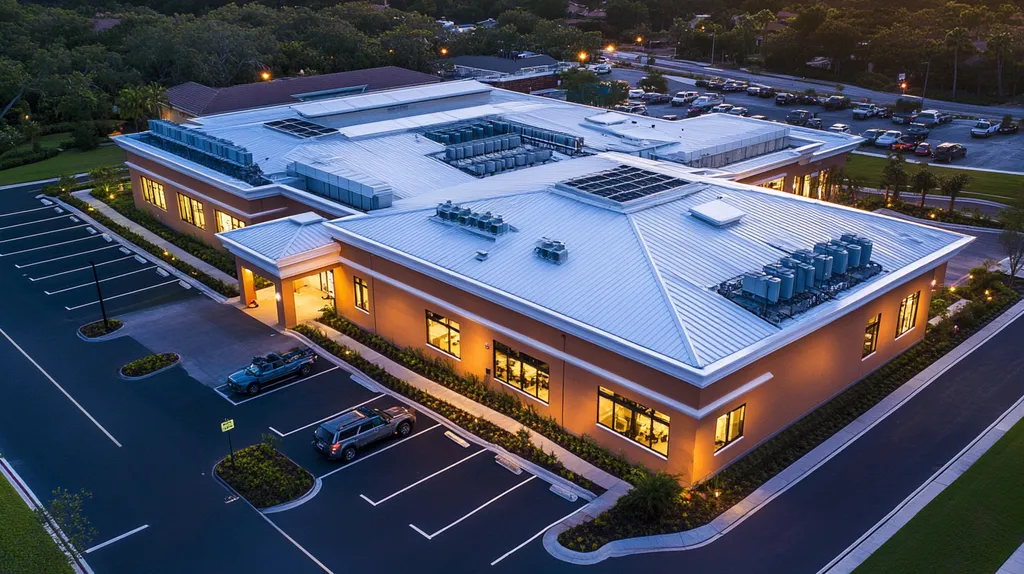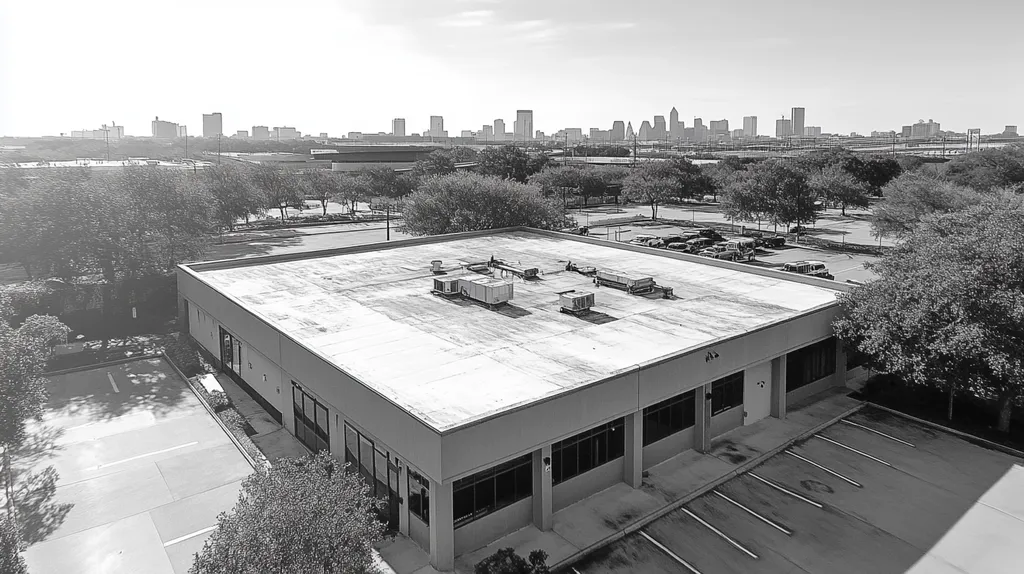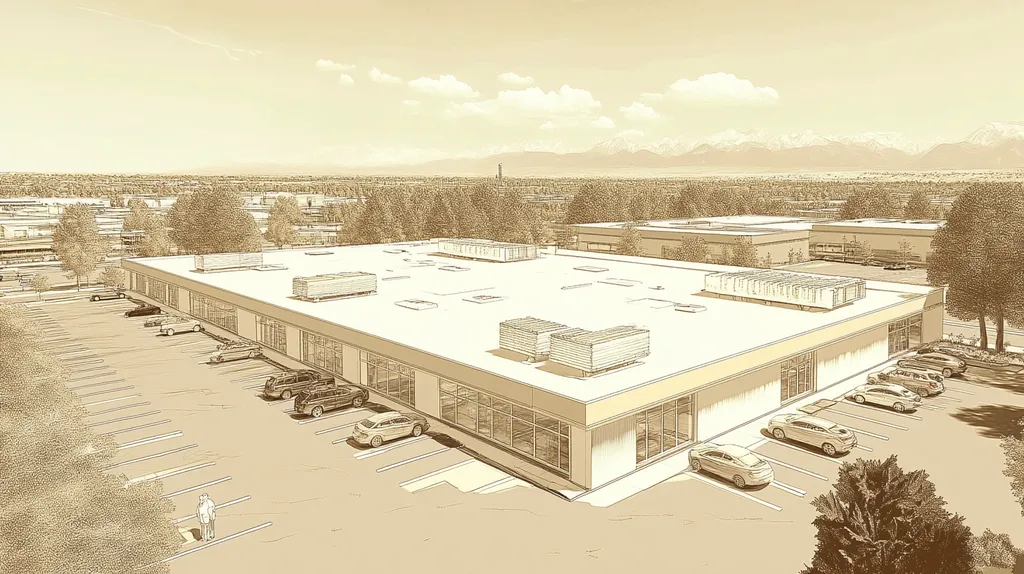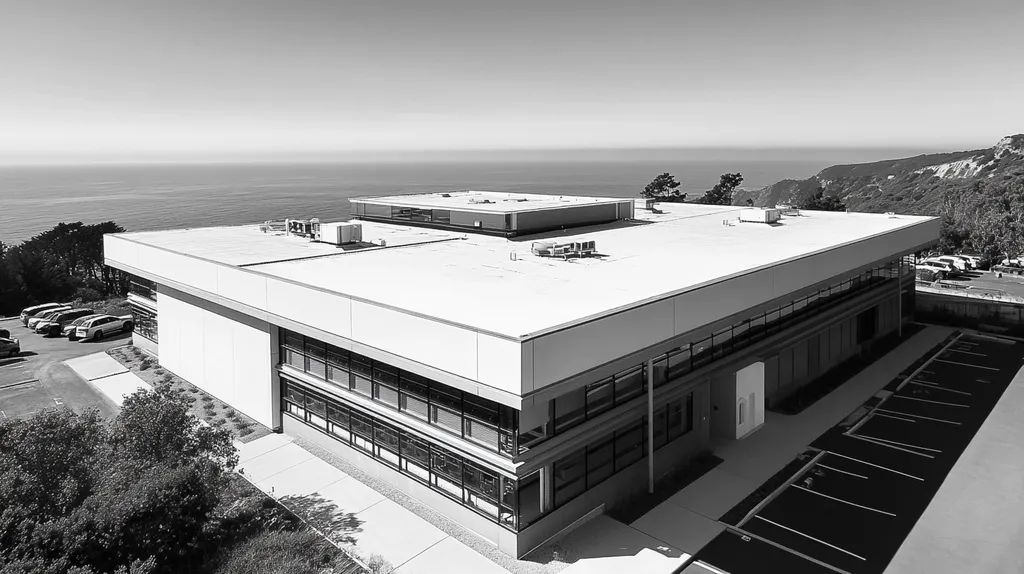Industrial roof coating failures cost facility owners millions annually, with studies showing that 40% of applications encounter significant issues within the first year. These problems often stem from preventable mistakes in preparation, material selection, and application techniques.
From surface contamination to environmental challenges, understanding common coating complications is crucial for protecting valuable roofing investments. Property managers who recognize and address these issues early can extend coating lifespans by up to 75%.
This comprehensive guide examines the critical factors affecting coating success, exploring solutions across surface preparation, material compatibility, application methods, and maintenance protocols.
SECTION 1: FUNDAMENTAL CONCEPTS
Industrial roof coatings are essential to enhance the durability and longevity of roofing systems. Ignoring fundamental principles can result in significant expenses due to premature failures and damage. Research shows that nearly 30% of coating applications fall short of performance standards due to poor surface preparation and mismatched materials. This section sheds light on the importance of surface preparation, the necessity for compatibility between roof materials and coatings, and the environmental factors that can influence the effectiveness of applications.
Importance of Surface Preparation
Surface preparation is the bedrock of a successful roof coating application. It is crucial for ensuring that the coating adheres properly and performs effectively. Failure to thoroughly clean the surface can result in leftover debris and residues that hinder bonding.
For instance, roofs contaminated with oils or loose granules put coatings at risk of delamination, potentially causing leaks and driving up maintenance costs sooner than expected.
Additionally, uneven surfaces can lead to inconsistent coatings, creating vulnerabilities that can deteriorate over time. Proper preparation requires careful cleaning, repairing any defects, and possibly priming the surface.
By investing time in thorough preparation, facility managers not only enhance the roof’s integrity but also protect their investment in the coating. Mastering these steps is essential for those focused on achieving durability and high performance.
Roof Material and Coating Compatibility
Compatibility between roofing materials and coatings is vital for achieving optimal performance. Using the wrong combinations can result in ineffective protection and costly failures. For example, applying a water-based coating over an oil-based surface can create adhesion problems that compromise the coating’s effectiveness.
Manufacturers provide essential compatibility guidelines, yet these details are often overlooked by property owners. Ignoring this important information can lead to substantial financial setbacks if a coating fails prematurely.
Moreover, certain materials may react differently under specific environmental conditions. A coating that is ideal for a metal roof may not hold up well on an EPDM membrane. Understanding material properties is key for achieving successful results.
Facility managers should collaborate with roofing professionals to ensure the right material and coating match is selected, protecting the building from unexpected wear and tear. Investing in this knowledge can save time and expenses in the future.
Environmental Considerations for Coating
Environmental conditions significantly influence the success of roof coating applications. Factors such as temperature, humidity, and weather patterns can affect both curing times and adhesion quality. Extreme temperatures might render some coatings either too thick or too thin, complicating the application process.
Applying coatings during wet conditions, for example, can result in moisture intrusion that diminishes effectiveness, leading to premature failure. Similarly, high humidity may trap moisture beneath the coating, causing blistering and peeling issues.
It is critical to monitor weather conditions and choose optimal application times carefully. Ignoring these environmental factors can result in inferior work that may require reapplication sooner than desired.
Incorporating environmental considerations into planning will help property owners maximize their investment. This proactive strategy ensures that coatings perform effectively, ultimately enhancing the roof’s lifespan and overall performance.
SECTION 2: SYSTEM COMPONENTS
Understanding the components of industrial roof coatings is vital for ensuring long-term effectiveness and performance. Studies indicate that nearly 30% of industrial roofs succumb to early failures due to poor choices in coating materials and installation techniques. Property owners must realize the importance of each system component, from selecting the appropriate coating type to recognizing the detailed roles of primers and reinforcements. This knowledge is essential, as it directly influences durability, maintenance needs, and overall cost-effectiveness.
Types of Industrial Roof Coatings
Industrial roof coatings are available in several types, each with unique properties suited to different applications. The most common varieties include acrylic, silicone, and polyurethane coatings. Each type brings distinct advantages, such as UV resistance, water repellency, and improved adhesion.
Acrylic coatings stand out for their eco-friendliness and flexibility, making them ideal for regions with fluctuating temperatures. Silicone coatings excel at waterproofing but may not perform as well in high-traffic areas due to their softer nature.
Polyurethane coatings shine in their chemical resistance, making them the go-to choice for facilities near harsh industrial environments. Choosing the right coating tailored to specific property needs is crucial, as mismatched options may create complications during application and result in costly rework.
Understanding the characteristics of these different coatings is not just beneficial; it is essential to ensuring that the roof remains secure and effective for years to come.
Role of Primers and Basecoats
Primers and basecoats play a foundational role in the roof coating process, significantly improving adhesion between the roof substrate and the topcoat. Applying the right primer is essential, as it helps prevent common issues like peeling and blistering that often arise from overlooking this critical step.
In addition to enhancing adhesion, primers also improve the overall effectiveness of the coating application. They seal minor leaks and guard against moisture intrusion, which can lead to more extensive maintenance problems down the line. For example, using a high-quality primer provides a smoother surface for the topcoat, resulting in a continuous protective layer.
Inconsistent application of primers can lead to uneven wear on the topcoat, diminishing its protective capabilities. Property owners should consult experienced roofing professionals to select primers that align with their unique roof materials and environmental conditions.
By paying close attention to these details, property owners can substantially extend the life of their roofing systems, representing a smart investment in maintenance and longevity.
Accessories and Reinforcements
Accessories and reinforcements are critical in strengthening industrial roofs against environmental stressors. Essential components such as sealants, flashing, and reinforcement fabrics are designed to bolster waterproofing and protect vulnerable roof areas. These are especially necessary at seams, penetrations, and transitions, where risks of leaks are heightened.
Reinforcement fabrics—like polyester or fiberglass—provide added structural integrity to the roofing system. Incorporating these materials can significantly reduce the likelihood of cracking and splitting, ultimately prolonging the effective life of roof coatings. They are particularly advantageous in high-traffic areas or climates prone to extreme weather.
Neglecting these accessories can result in localized failures that might lead to expensive repairs. For instance, improperly sealed seams are frequent failure points where leaks can develop, creating costly damage to the building’s interior.
Therefore, it is essential for property owners to work with their roofing contractors to utilize appropriate accessories tailored to meet their specific roofing challenges. This proactive approach can lead to substantial savings in repair costs over the lifespan of the roof.
SECTION 3: IMPLEMENTATION METHODS
Implementing effective roof coating applications is essential for protecting industrial assets. A strategic approach helps minimize costly mistakes and enhances the lifespan of the roof. Statistics indicate that improper application techniques can dramatically reduce both roof longevity and increase maintenance expenses. This section addresses key steps, including conducting pre-application inspections, ensuring correct application thickness, and avoiding extreme weather conditions.
Pre-Application Inspections and Repairs
A thorough pre-application inspection is crucial to a successful roof coating. Property owners must evaluate the roof’s current condition to identify damage or deterioration that could undermine the new coating’s performance. For example, unnoticed leaks or cracked seams can severely compromise adhesion, leading to costly repairs down the line.
Before applying any coating, addressing issues like rust, standing water, and debris is essential. By ensuring a clean, stable surface, the likelihood of proper bonding between the coating and substrate increases significantly. Failure to complete these steps can result in issues such as peeling and blistering, ultimately incurring higher costs for repairs.
Engaging experienced roofing professionals during inspections is beneficial, as they can detect problems that may be overlooked by the untrained eye. Their insights enhance the quality of preparation and increase the chances of a successful application.
In summary, thorough preparation and repair establish a solid foundation for effective roof coatings. Neglecting these essential steps can lead to ongoing challenges post-application.
Correct Application Thickness and Techniques
The right application thickness is vital for ensuring the durability and effectiveness of roof coatings. Coatings applied too thin fail to adequately protect the substrate, leading to rapid wear. Conversely, applying too much can cause issues like sagging and cracking.
Application techniques are equally important as thickness. Methods can differ based on the coating type and roof surface, with incorrect approaches potentially hindering adhesion. For instance, using an unsuitable roller cover can cause inconsistencies and bubble formation in the coating.
Proper training for applicators is essential to guarantee successful results. Well-trained teams adhere to manufacturer guidelines and best practices, ensuring that the coating is applied evenly and effectively. This diligence helps avoid the issue of uneven surfaces, which can disrupt drainage and reduce longevity.
In conclusion, following recommended application thickness and techniques significantly influences the roof’s performance. A strong execution strategy paves the way for a thriving roofing system.
Avoiding Extreme Weather Conditions
Weather conditions substantially impact the success of roof coating applications. Applying coatings during extreme temperatures or adverse weather can lead to serious complications, such as inadequate curing and poor adhesion. For instance, high humidity may trap moisture and result in premature failures.
Scheduling work during favorable weather conditions minimizes risk. Ideally, coating applications should occur within moderate temperature ranges to avoid freezing or excessive heat. Utilizing weather forecasts for planning can help maintain optimal conditions.
Property owners should engage in open communication with roofing contractors regarding potential weather-related delays. This planning ensures that the quality of the application remains high, shielding against unforeseen circumstances that often lead to costly repairs.
Ultimately, recognizing and accommodating weather-related factors is vital in the coating application process. Overlooking this element can jeopardize the entire project and lead to considerable financial losses.
SECTION 4: MAINTENANCE REQUIREMENTS
Industrial roof coatings are engineered to enhance the lifespan and durability of roofing systems. However, without proper maintenance, coatings can deteriorate more quickly than expected. Regular inspections and timely interventions can prevent minor issues from escalating into costly repairs or even complete roof replacements. Research shows that facilities with robust maintenance strategies can extend their roof lifespan by up to 50%. In this section, we’ll explore essential maintenance protocols, common coating failures, and effective preventative strategies to ensure long-lasting roof integrity.
Regular Inspection Protocols
Instituting a robust routine inspection schedule is vital for effective industrial roof management. Property managers should conduct inspections at least twice a year, ideally in spring and fall. During these inspections, look for visible signs of wear such as cracks, blisters, and peeling edges.
In addition to scheduled checks, it’s essential to perform thorough post-storm assessments. Weather events can cause hidden damage like leaks and structural issues, requiring immediate attention to prevent costly repairs. Promptly addressing these problems saves significant time and resources.
Technology can enhance the inspection process significantly. Tools like drones and thermal imaging cameras detect heat loss or moisture that isn’t visible to the naked eye, facilitating quicker interventions. After an inspection, documenting findings and scheduling necessary repairs is crucial.
Maintaining clear access routes for inspectors is also important. Obstructions can lead to missed issues and reduce the overall effectiveness of the maintenance strategy.
Addressing Common Coating Failures
Identifying and addressing common coating failures is essential for maintaining roof integrity. One prevalent problem is blistering, which can be caused by trapped moisture or air beneath the coating. When detected, it’s crucial to address blistering swiftly to prevent further damage.
Degradation from UV exposure is another frequent issue. Over time, coatings can become brittle and lose their reflective properties, impairing their ability to protect the underlying materials. Routine maintenance, including reapplication of protective topcoats, can mitigate these effects.
Peeling and cracking often arise from improper application or environmental stressors. Regular inspections allow for early identification, enabling timely patching or full recoating as necessary. Ignoring these signs can quickly escalate into leaks and moisture intrusion.
Surface contamination from dirt, algae, or mold can also compromise the coating’s adhesion. Implementing a regular cleaning regimen prevents these contaminants and ensures optimal performance of the roof coating.
Preventative Maintenance Strategies
Proactive maintenance strategies are crucial for maximizing the life of industrial roof coatings. Establishing a dedicated maintenance budget for routine touch-ups and emergency repairs can significantly reduce long-term costs. This financial planning pays off in the long run.
Creating a comprehensive maintenance calendar with key tasks, such as inspections, cleanings, and reapplications, ensures that critical steps are not overlooked. Collaborating with professional roofing contractors for specialized inspections or repairs adds another layer of effectiveness.
Training facility staff on roof care management can greatly enhance maintenance efforts. Educated employees can spot and report minor issues promptly, preventing them from escalating into more serious problems.
Lastly, factoring in seasonal weather considerations in the maintenance plan strengthens its overall effectiveness. Preparing roofs for heavy snow loads or significant rainfall helps safeguard against potential damage and maintains the integrity of the coating.
SECTION 5: PERFORMANCE METRICS
Understanding performance metrics in industrial roof coatings is essential for property owners and facility managers. The ability of a coating to adhere, resist water, and improve energy efficiency can significantly affect safety, longevity, and operational costs. Neglecting these metrics can lead to increased maintenance expenses and disruptive leaks. This section will explore crucial performance metrics, emphasizing adhesion, water resistance, and energy efficiency.
Evaluating Coating Adhesion and Durability
Adhesion stands out as a primary concern in roof coating applications. When a coating fails to bond properly with the existing roof surface, it can peel or blister, resulting in costly repairs. Conducting a peel test before full application is an effective way to assess adhesion quality.
Durability of the coating is another critical metric. Coatings that resist harsh weather and foot traffic contribute to a longer roof lifespan. It is vital to perform regular evaluations throughout the coating’s life cycle to confirm its ongoing performance.
Selecting coatings known for their strong adhesion can also affect warranty conditions. Manufacturers often provide extended warranties for products tested with strict adherence standards, positively influencing long-term costs for property owners.
Ultimately, comparing different coatings’ adhesion properties allows facility managers to make informed decisions, greatly enhancing overall building performance.
Assessing Water Resistance and Leak Protection
Water resistance is a cornerstone of effective roof coatings. A good coating must create a barrier against moisture infiltration, which can lead to structural damage and mold growth. Therefore, using high-quality materials that suit the roof’s environmental conditions is essential.
Leak protection is an equally crucial focus. Conducting regular inspections combined with moisture detection techniques can help identify potential breaches early. Employing a layer of liquid-applied membranes can provide continuously protected coverage, minimizing seams that are prone to leaks.
Testing methods, such as the water ponding test, evaluate how well a coating performs under direct water exposure. This proactive approach ensures that the coating can handle intense weather conditions without compromising its integrity.
Overall, a thorough assessment of water resistance and leak protection is essential for maintaining a secure and operational facility.
Measuring Energy Efficiency and Cost Savings
Energy efficiency increasingly concerns many facilities, as coatings with reflective properties can significantly reduce cooling costs by minimizing heat absorption. For example, white or light-colored coatings can reflect up to 85% of solar energy, providing substantial savings during peak summer months.
Implementing reflective coatings can lead to considerable reductions in energy bills. Many facilities experience lower costs after application, underscoring the financial benefits of choosing the right coating.
In addition, high-quality coatings can enhance insulation, reducing wear on HVAC systems. This not only extends the life of essential equipment but also leads to significant savings over time.
Ultimately, measuring energy efficiency capabilities alongside potential cost savings empowers facility managers to make informed choices while supporting sustainability goals.
SECTION 5: PERFORMANCE METRICS
Understanding performance metrics in industrial roof coatings is not just important; it’s critical for property owners and facility managers aiming to safeguard their investments. A coating’s ability to adhere, resist water, and enhance energy efficiency directly affects safety, longevity, and operational costs. For instance, overlooking these metrics can lead to unnecessary maintenance expenses and disruptive leaks that can compromise building integrity. This section will explore vital performance metrics, with a focus on adhesion, water resistance, and energy efficiency.
Evaluating Coating Adhesion and Durability
Adhesion is paramount in roof coating applications. When a coating fails to bond effectively with the existing roof surface, it can result in peeling or blistering, which leads to costly repairs. Conducting a peel test is a straightforward method to assess adhesion quality before the coating is fully applied.
Durability is another essential metric to consider. Coatings that can withstand harsh weather conditions and foot traffic significantly extend the overall lifespan of the roof. Regular evaluations during the coating’s life cycle are crucial to ensure it continues to perform at a high level.
Selecting coatings known for their strong adhesion can also influence warranty conditions. Manufacturers typically offer longer warranties for products tested under strict guidelines, which can positively impact long-term costs for property owners.
In conclusion, evaluating different coatings’ adhesion properties enables facility managers to make informed decisions that enhance the building’s overall performance.
Assessing Water Resistance and Leak Protection
Water resistance is a cornerstone of effective roof coatings. A strong coating must create a robust barrier against moisture infiltration, which can lead to structural damage and mold growth if left unchecked. Therefore, it is essential to choose high-quality materials specifically designed for the roof’s environmental conditions.
Leak protection is equally crucial. Regular inspections and moisture detection techniques can help identify potential breaches early. Utilizing liquid-applied membranes can provide continuous coverage, minimizing seams where leaks can occur.
Testing methods, such as the water ponding test, effectively evaluate how well a coating can perform under direct water exposure. This proactive approach ensures that the coating is robust enough to handle intense weather without compromising its integrity.
Ultimately, thorough assessment of water resistance and effective leak protection is essential for maintaining a secure and operational facility.
Measuring Energy Efficiency and Cost Savings
Energy efficiency is increasingly important for many facilities. Coatings with reflective properties can significantly reduce cooling costs by minimizing heat absorption. For instance, white or light-colored coatings can reflect up to 85% of solar energy, offering considerable savings during peak summer months.
Implementing reflective coatings can lead to noteworthy reductions in energy bills. Many facilities report lower energy costs after applying these coatings, illustrating how they can provide financial benefits.
Additionally, high-quality coatings enhance insulation, which reduces wear and tear on HVAC systems. This not only saves money but also extends the lifespan of critical equipment, further contributing to overall cost savings.
By evaluating energy efficiency alongside potential savings, facility managers can make informed choices that align with sustainability goals while bolstering their bottom line.
Moving Forward
With industrial roof coating failures costing facility owners over $3.2 billion annually, the stakes for proper application and maintenance have never been higher.
Research demonstrates that facilities implementing comprehensive coating strategies – from proper surface preparation to regular maintenance protocols – can extend their roof lifespans by up to 300% compared to those taking a reactive approach.
By addressing common issues like improper thickness, environmental conditions, and material compatibility early in the process, property managers can avoid the most frequent and costly coating failures.
The future of industrial roofing lies in proactive management, with emerging technologies and improved coating formulations offering unprecedented opportunities to protect valuable roofing assets while maximizing energy efficiency and sustainability.
FREQUENTLY ASKED QUESTIONS
Q. Why is surface preparation critical for a commercial roof coating?
A. Surface preparation is essential for proper adhesion and optimal performance of coatings. If surfaces are not adequately cleaned or repaired, leftover debris can prevent the coating from bonding effectively, leading to issues like peeling and delamination. Investing time in this step can greatly enhance the roof’s longevity and reduce future maintenance costs.
Q. What types of coatings are best for an industrial roof?
A. Common types of industrial roof coatings include acrylic, silicone, and polyurethane. Each has specific advantages; for example, polyurethane offers excellent chemical resistance, while silicone is great for waterproofing. Understanding their properties helps property owners choose the most suitable option for their roofing needs, maximizing longevity and effectiveness.
Q. How important is pre-application inspection for a commercial roof?
A. Conducting a thorough pre-application inspection is vital to identify any damage that could affect the coating’s performance. Ignoring issues like rust or cracks may lead to peeling and premature failures, resulting in costly repairs. Engaging professionals for this inspection enhances overall preparation quality and application success.
Q. What are the best maintenance practices for an industrial roof?
A. Regular inspections and timely repairs are essential for maintaining an industrial roof. Scheduling evaluations at least twice a year helps catch issues such as cracks or leaks early, preventing costly damage. Additionally, instituting a cleaning regimen and documenting findings can further enhance the roof’s longevity and performance.
Q. How can I measure the energy efficiency of my roof coating?
A. Energy efficiency can be assessed by examining the reflective properties of the coating, which directly affect cooling costs. Coatings that reflect solar energy help reduce heat absorption, leading to lower energy bills. Utilizing energy modeling tools can provide insights into potential savings based on the specific coating used.
Q. Can environmental factors impact my industrial roof coating application?
A. Yes, environmental conditions like temperature and humidity are crucial during application. Extreme weather can adversely affect adhesion and curing times, leading to poor performance. It is essential to plan applications during favorable weather to ensure that coatings set correctly and achieve maximum effectiveness.
Q. What are the consequences of neglecting adhesion testing for roof coatings?
A. Neglecting adhesion testing can result in severe failures such as peeling and blistering. These failures often lead to costly repairs and may require complete reapplication of the coating. Regular testing ensures a strong bond between the coating and the roof surface, reinforcing overall performance and durability for years.











